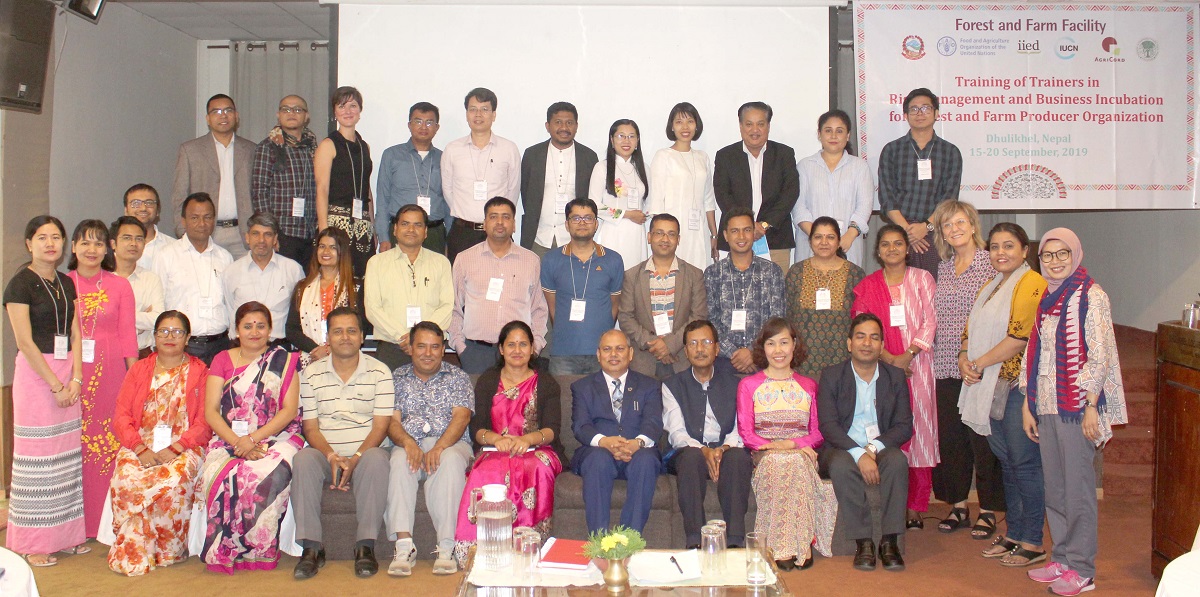Nepal achieves a global commitment to double the tiger
Nepal declared its tiger population has reached 355 on the occasion of Global Tiger Day. With this, Nepal has successfully achieved a global commitment of the St. Petersburg tiger summit to double the wild tigers by 2022.
According to the 2009 tiger census, there were 121 wild tigers in Nepal which increases to 198 in 2013 and 235 in 2018. The total number of tigers has increased by 120 in the last four years.
The latest tiger census report shows that there are 128 tigers in Chitwan National Park, 125 in Bardiya National Park, 41 in Parsa National Park, 25 in Banke National Park and 36 in Shuklaphanta National Park, totaling the number of 355.
 Photo: Krishna Hengaju/IUCN
Photo: Krishna Hengaju/IUCN
"The joint effort of government, all conservation partners and local communities has resulted in this success", said Dr. Ram Chandra Kandel, Director General, Department of National Parks and Wildlife Conservation, Government of Nepal. "However, there is still need to work further on effective habitat management, promoting human-tiger co-existence, maintaining the tiger number, minimizing the impact of large linear infrastructure and strengthening the knowledge, research and monitoring."
Dr. Narendra Man Babu Pradhan, Programme Coordinator at IUCN Nepal said, “We are committed to supporting government conservation initiatives and the encouraging result is the joint efforts of all. Now, our effort should focus to maintain this population and need to collaborate to reduce the growing human-tiger conflict.”
In 2010, the leaders of 13 tiger range countries (Bangladesh, Bhutan, Cambodia, China, India, Indonesia, Lao PDR, Malaysia, Myanmar, Nepal, Russia, Thailand, and Viet Nam) assembled at an International Tiger Summit in St. Petersburg, Russia and committed to double the number of wild tigers across their geographical area by 2022. At that time, Nepal set the target to achieve a tiger population of 250 by 2022. However, the current encouraging result shows 105 more tigers in Nepal than the set target.
 Photo: Krishna Hengaju/IUCN
Photo: Krishna Hengaju/IUCN
IUCN is implementing the Integrated Tiger Habitat Conservation Programme (ITHCP) initiative funded by the German Cooperation (BMZ) through the German Development Bank (KfW). The initiative was created in 2014 as a contribution to the Global Tiger Recovery Programme (GTRP).
The first phase of the ITHCP was implemented between 2014 and 2021, and provided grants to a wide range of organisations to operate 12 projects in priority Tiger Conservation Landscapes across six Tiger Range Countries (India, Nepal, Bangladesh, Bhutan, Myanmar and Indonesia).
In Nepal, ITHCP provided grant support to WWF and ZSL to work on tiger recovery, habitat management, human-wildlife conflict mitigation, livelihood improvement etc in the Chitwan National Park, Bardiya National Park, Parsa National Park, Banke National Park and Shuklaphanta National Park.
 Landscape of Chitwan National Park, Nepal
Photo: Amit Poudyal/IUCN
Landscape of Chitwan National Park, Nepal
Photo: Amit Poudyal/IUCN



